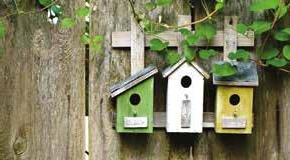
3 minute read
Home & Garden
The big spring clean made easy
Spring is a great time to get the house looking back to its best. A bit of organising or cleaning can help you feel happier, de-stress and even make you feel more focused. Not only can it lead to feeling better, but a bit of spring cleaning can also make you more productive and save time across the rest of the year. Although it may seem daunting at first it, the benefits will be well worth the time you put in now. Here’s some top tips from Peddler.com on how to spring clean efficiently and make the task less intimidating.
Advertisement
Declutter – Maybe the biggest part of a spring clean is getting rid of the clutter that you don’t need. Over the years you may have collected a lot of junk so the best place to start before you even begin cleaning is identifying what you can immediately get rid of to clear space and free up the home. Sort between items that can be thrown away, given away or stored. Once you have more space you can start the cleaning.
EMBRACING BIODIVERSITY:
DO YOUR BIT FOR THE PLANET & ENJOY YOUR GARDEN MORE!
If you’re looking to impact the environment more positively and ramp up the natural activity in your outdoor space, here’s some fab tips and expert opinions on how to create the perfect space…
Start room by room and work from top to bottom
– When the whole house needs a spring clean it can be overwhelming. An easy way to get started is to work room by room. Choose the room you want to begin with and make sure to always start from the top. Debris and dust will fall as you clean so make sure to dust off everything and then finish with hoovering at the end. Clean with intelligence – It generally isn’t possible to clean the whole house in one go, but if you plan rooms and allocate time to clean each area you won't feel rushed and will do a much better job. Ensure you move all furniture and don’t leave any area untouched. Cutting corners just means you will have to do it again in the near future. Establish new cleaning habits – Once you have the
house in order, you will want to keep it that way. Though it is probably not possible or practical to keep it in the same state after a spring clean, a simple 15-30 minute clean every few days will keep you on top of everything and even a few chores will make a big difference to keeping the house in check.

1. Welcome wildlife to your garden - wildlife
is an integral factor in encouraging biodiversity in your garden. It promotes pollination, deters harmful organisms, and brings an aspect of vitality to any outdoor space. Ideas include 1. Creating a small rock garden to encourage
bees, which act as an important polliniser in your garden, thus reinforcing further growth and diversity in your garden.
2. Collecting deadwood to help grow insect
colonies – did you know that ladybirds act as a natural pesticide by feeding almost exclusively on aphids (small flies) and red spider mites? By placing deadwood that you can collect from your local woodland, you will be encouraging the growth of ladybird and other beetle colonies that will act to preserve and protect your harvest. Furthermore, it can be used as hibernation grounds for small
rodents like hedgehogs, especially entering into the autumn and winter months.
3. Retaining soil moisture with decorative bark
- garden bark not only has a decorative function, but it acts to prevent evaporation from the soil, discourages the growth of weeds, and over time, develops the quality of your soil. 4. Growing native plants - the benefit of planting
native seeds and shrubs in your garden is simple – you are encouraging the growth of plants that are confirmed to grow well in your local area. This recognises that the plants that naturally surround you are already accustomed to the climate, pH level of the soil, and the wildlife that may feed off it. You may even be able to take cuttings of plants from your local woodland or park to cut costs. Even then, buying from a local plant nursery can also help the local economy and encourage more wildlife and sustainable growth in your local area.









